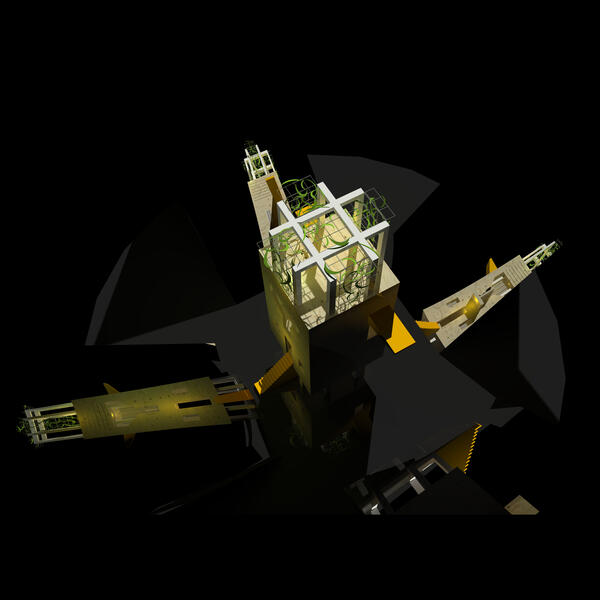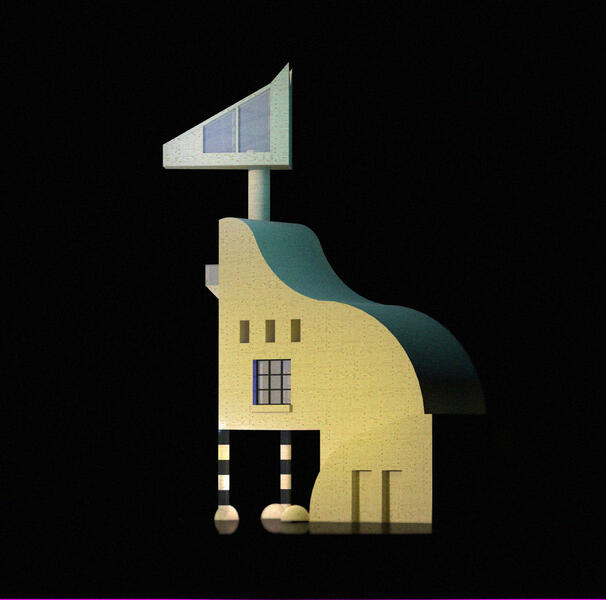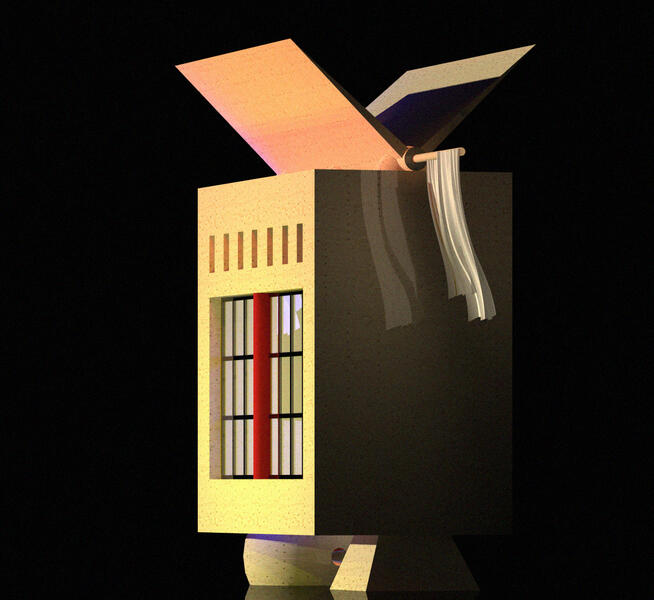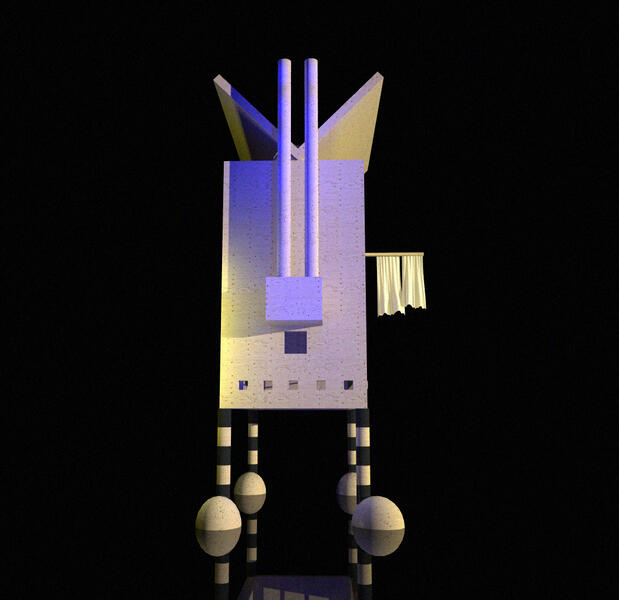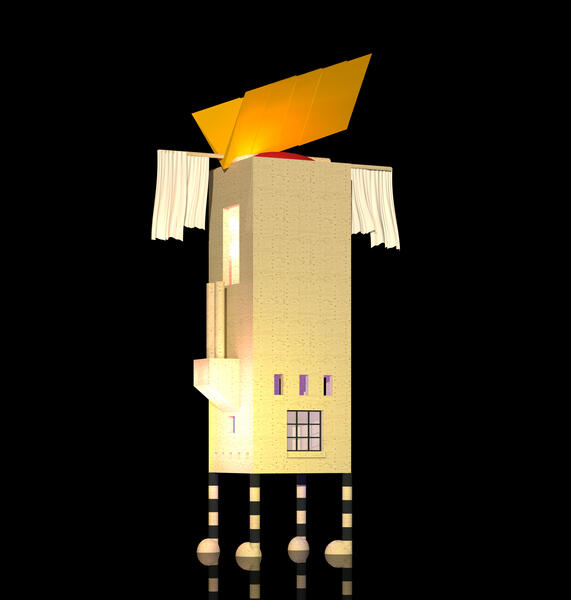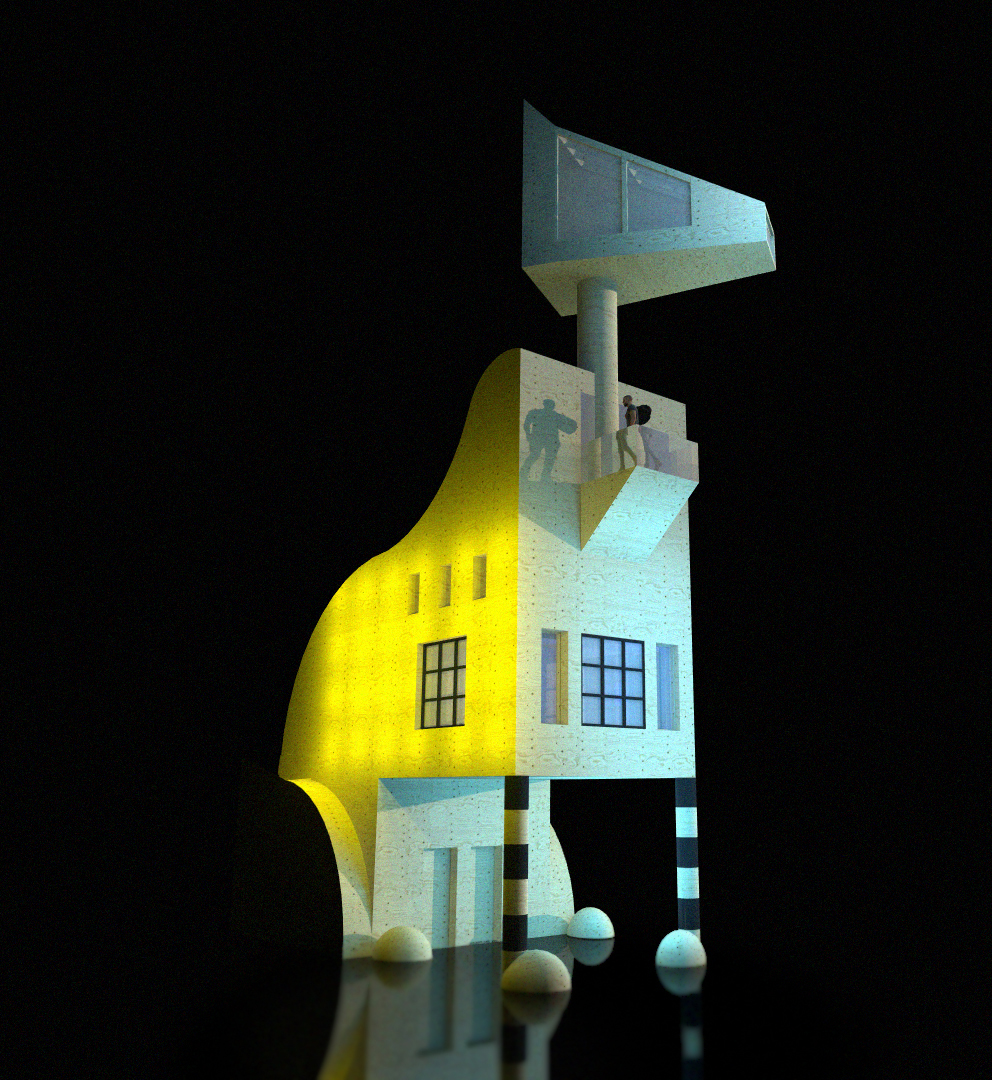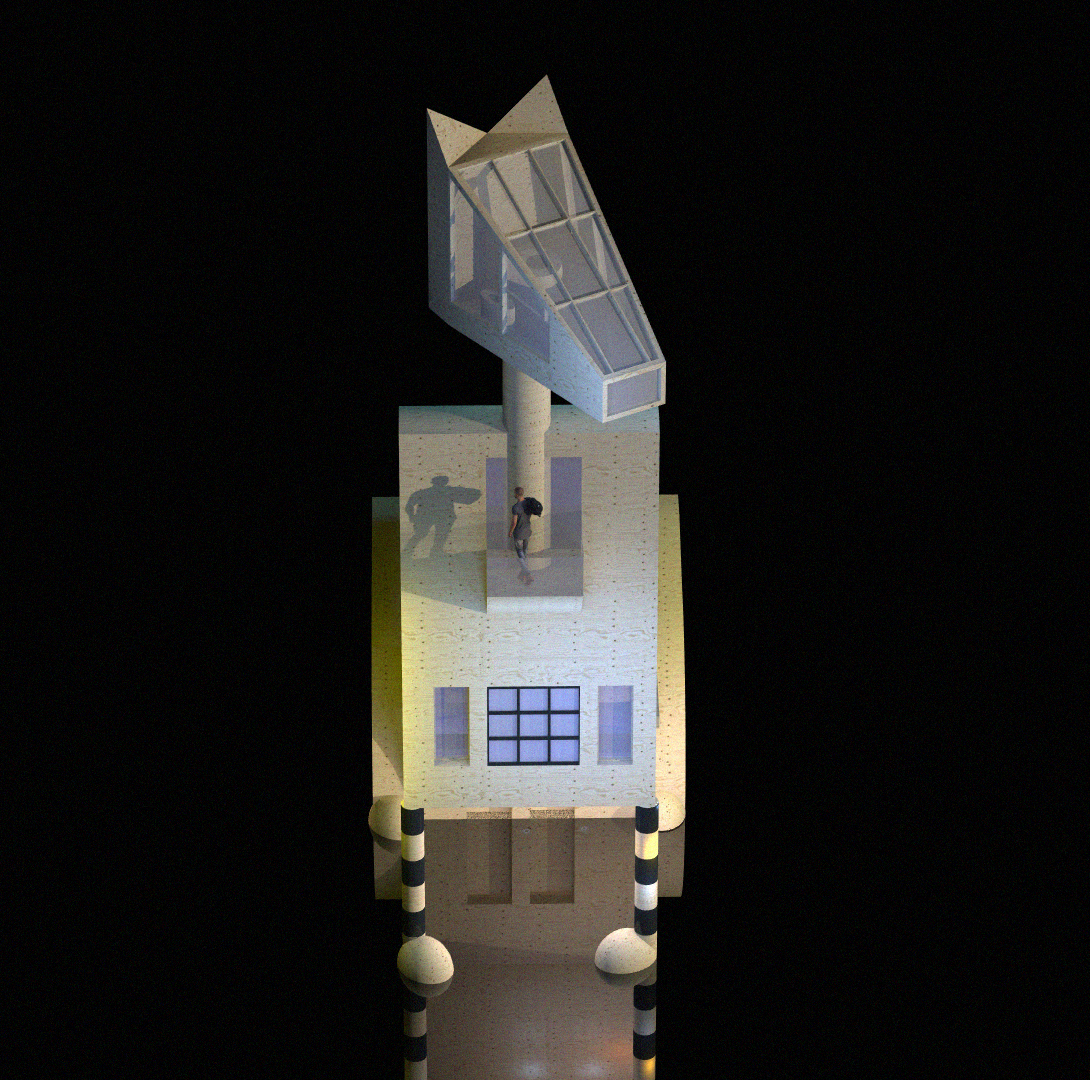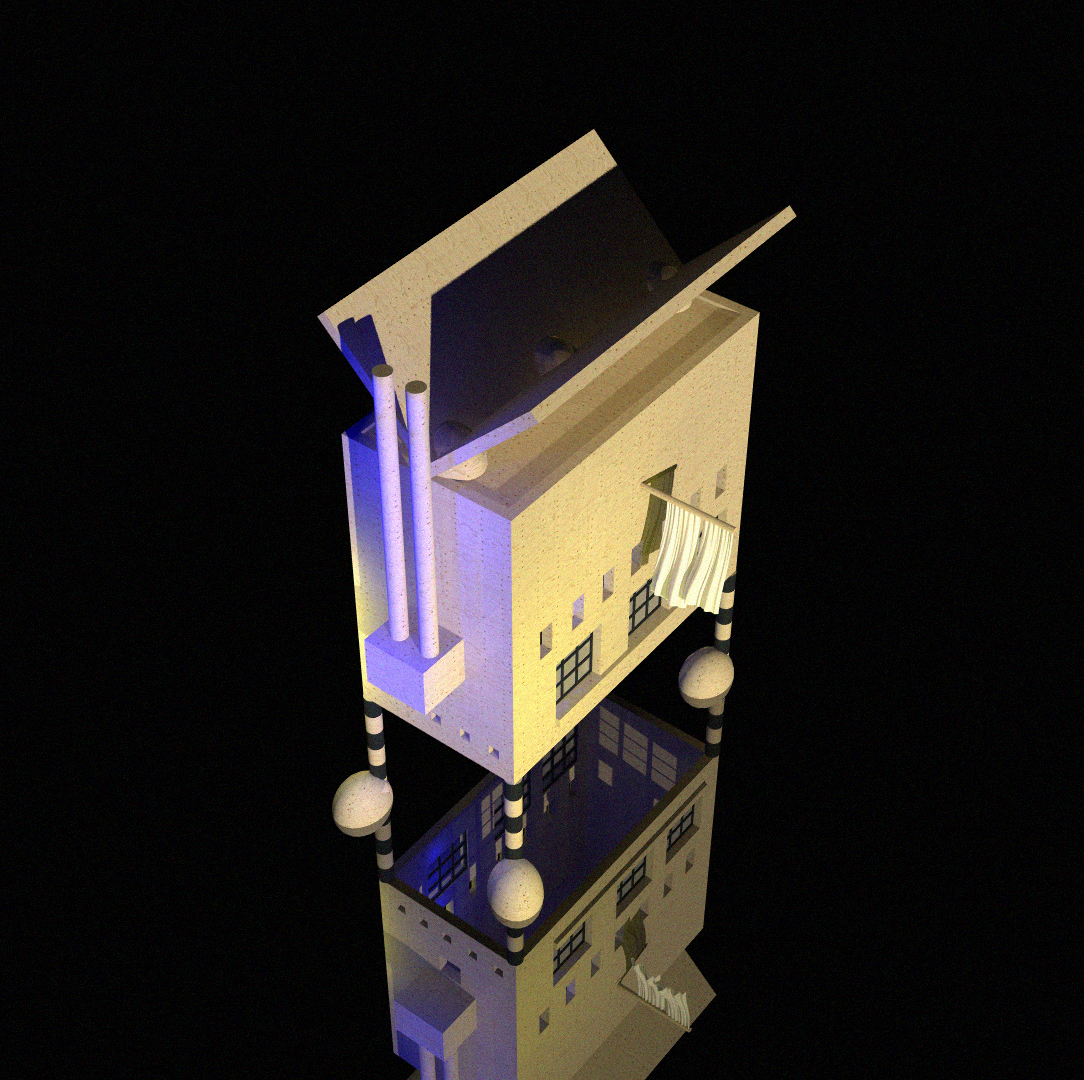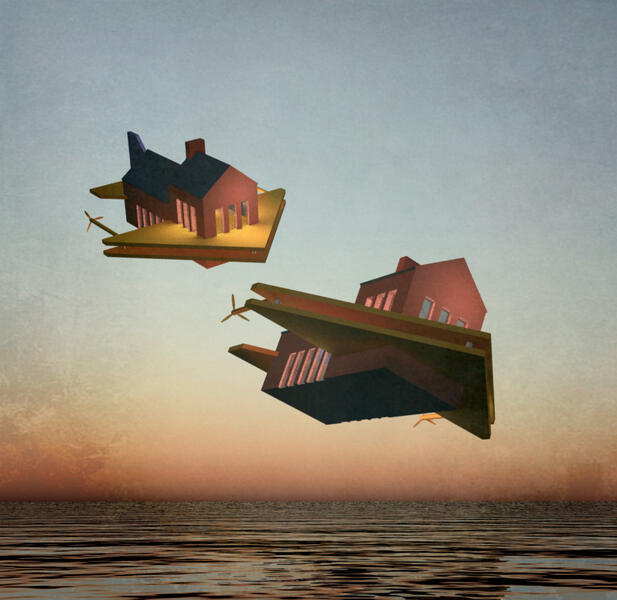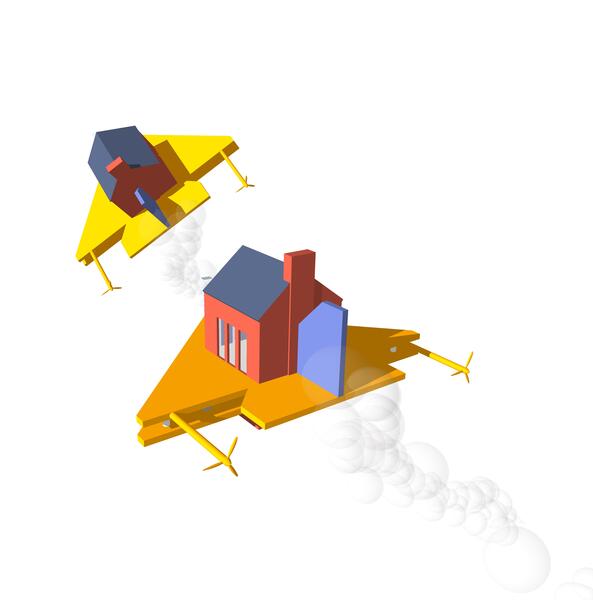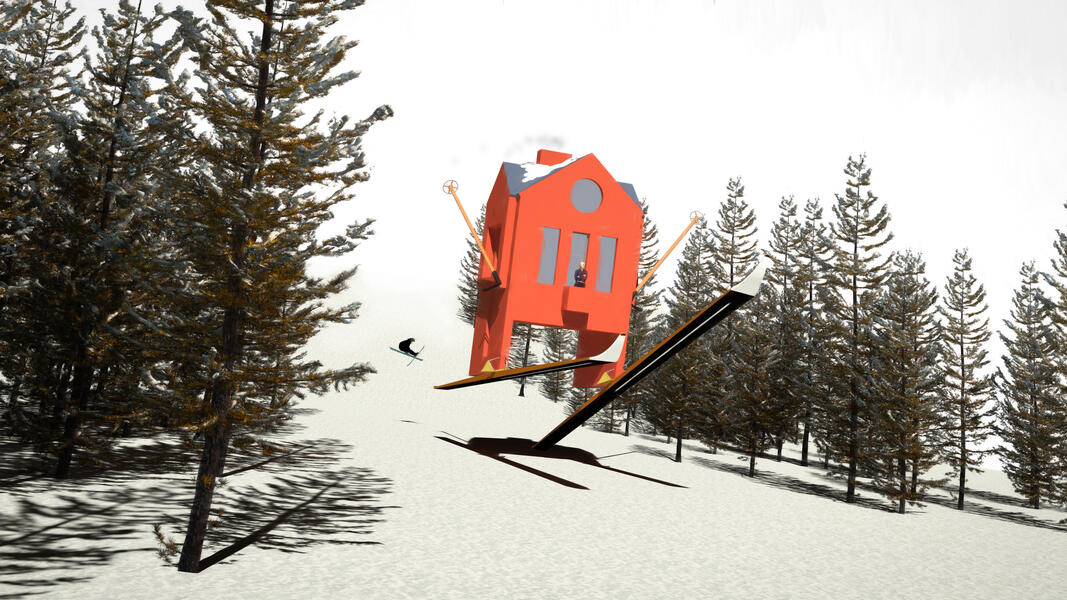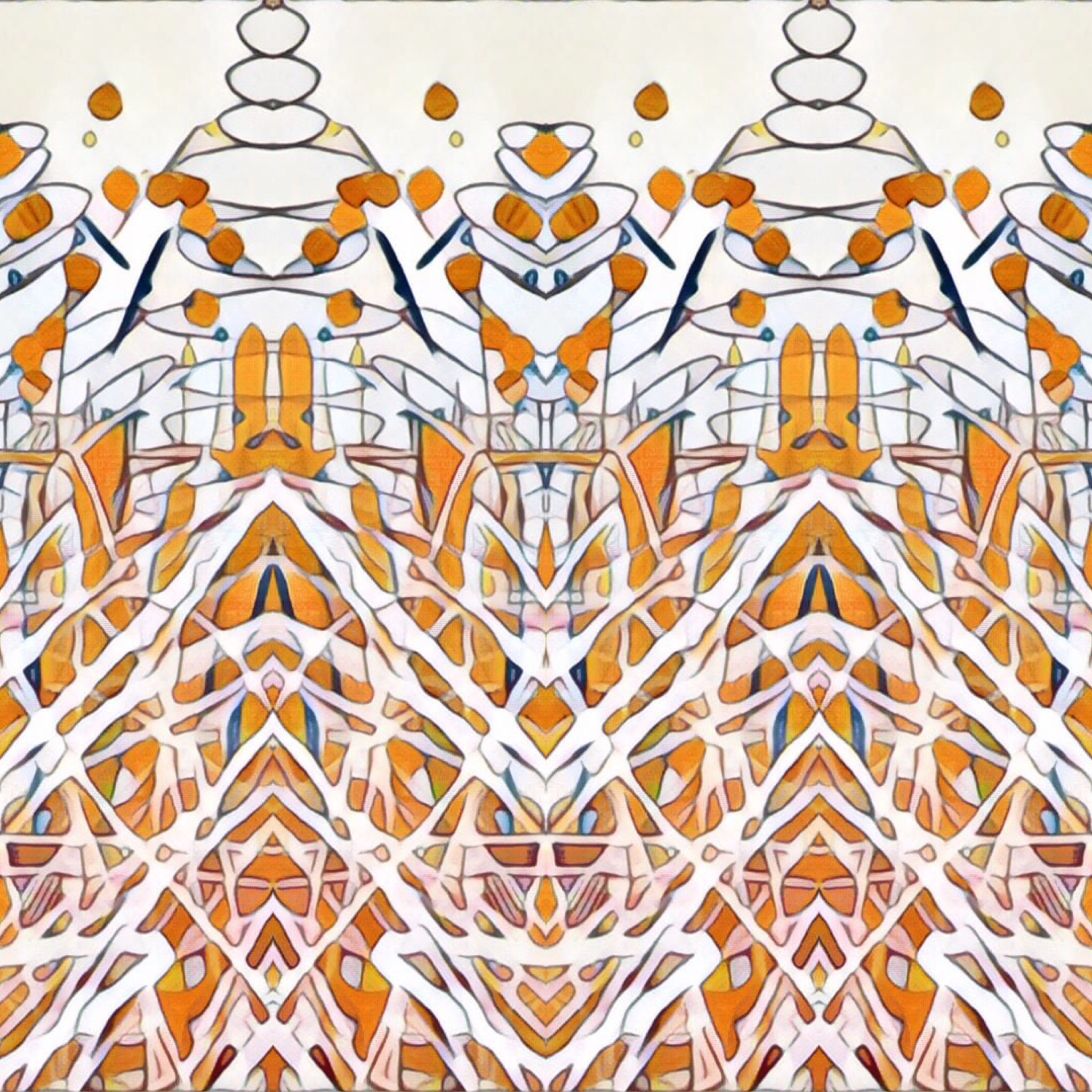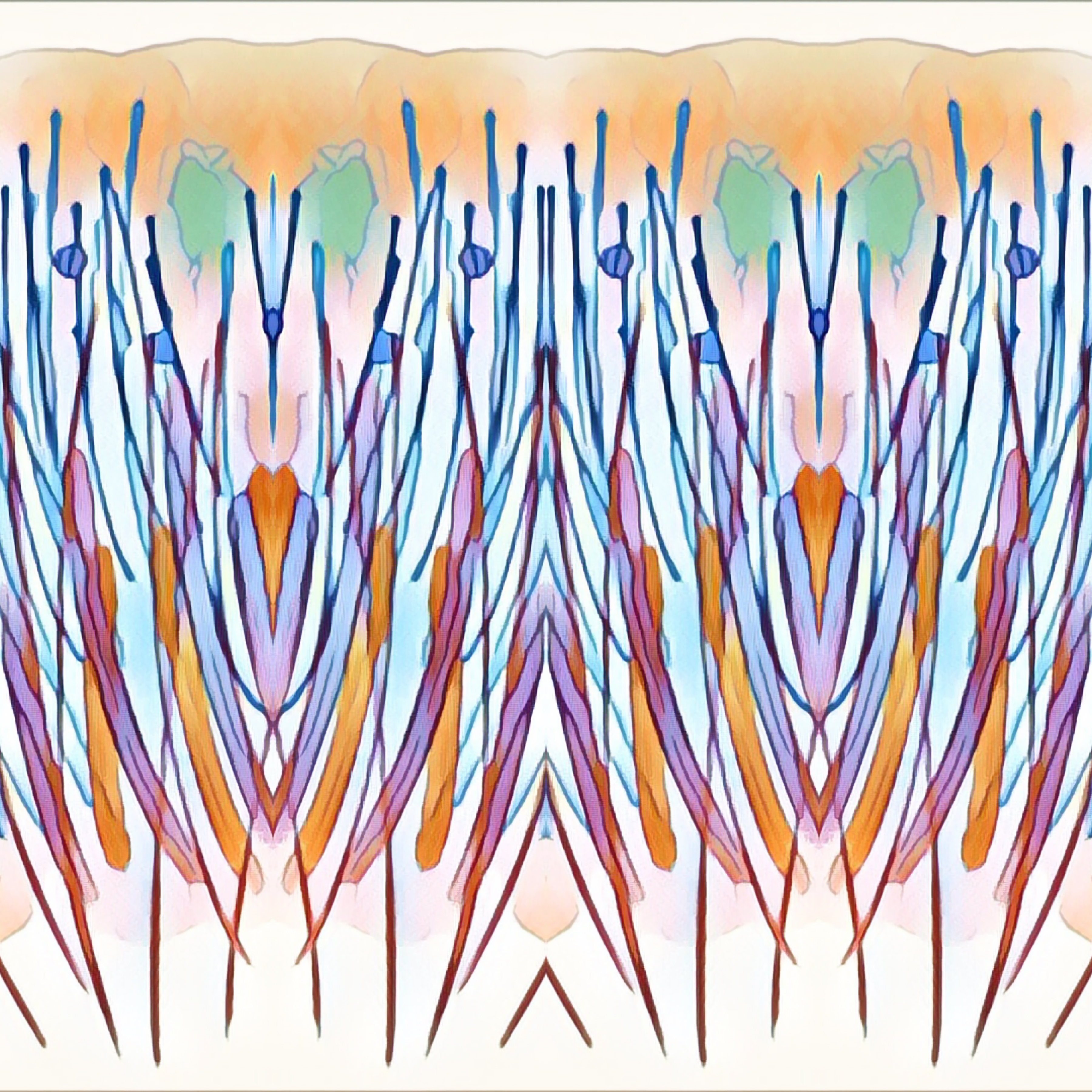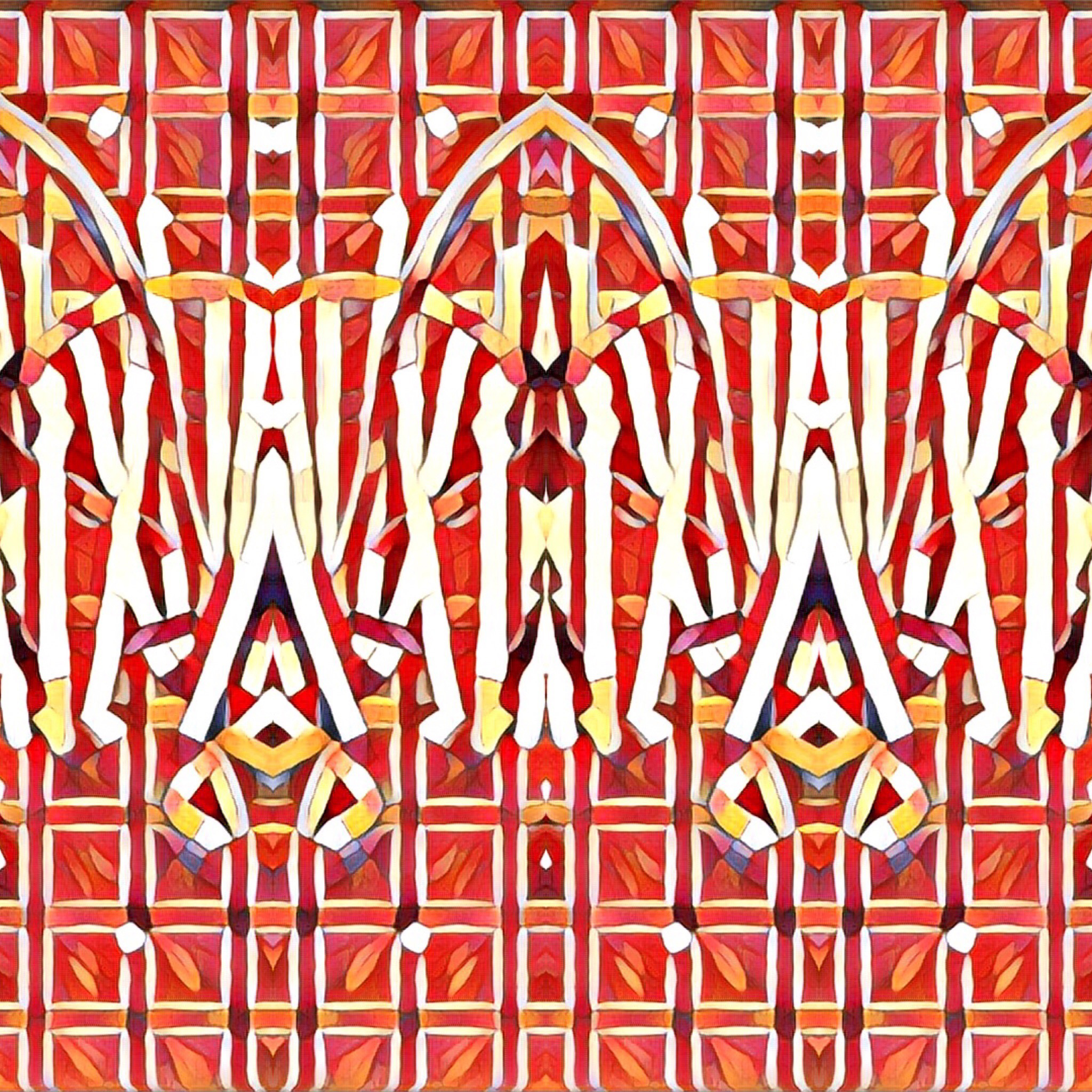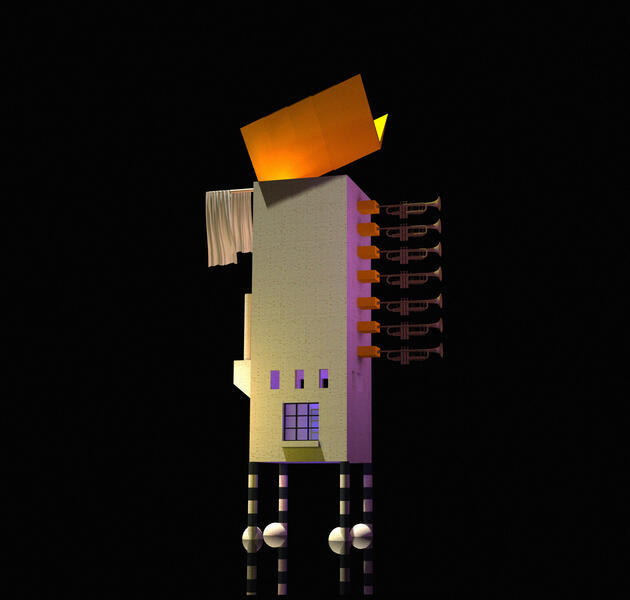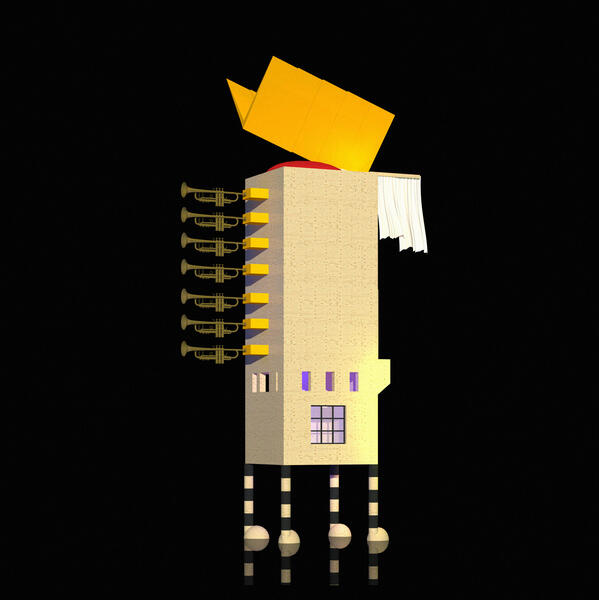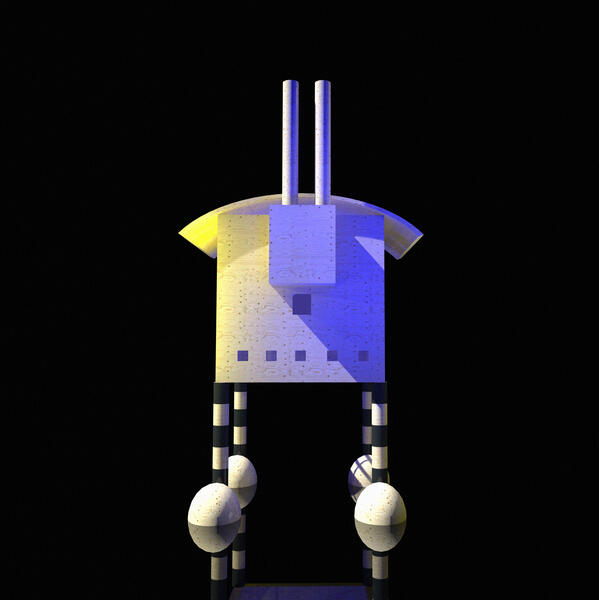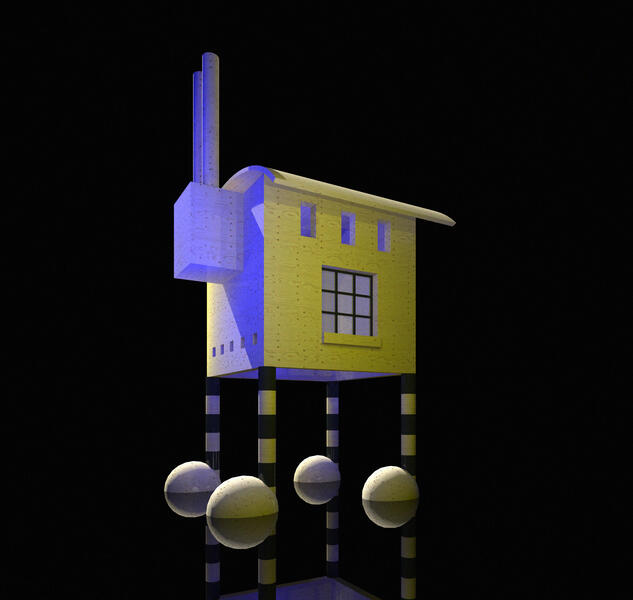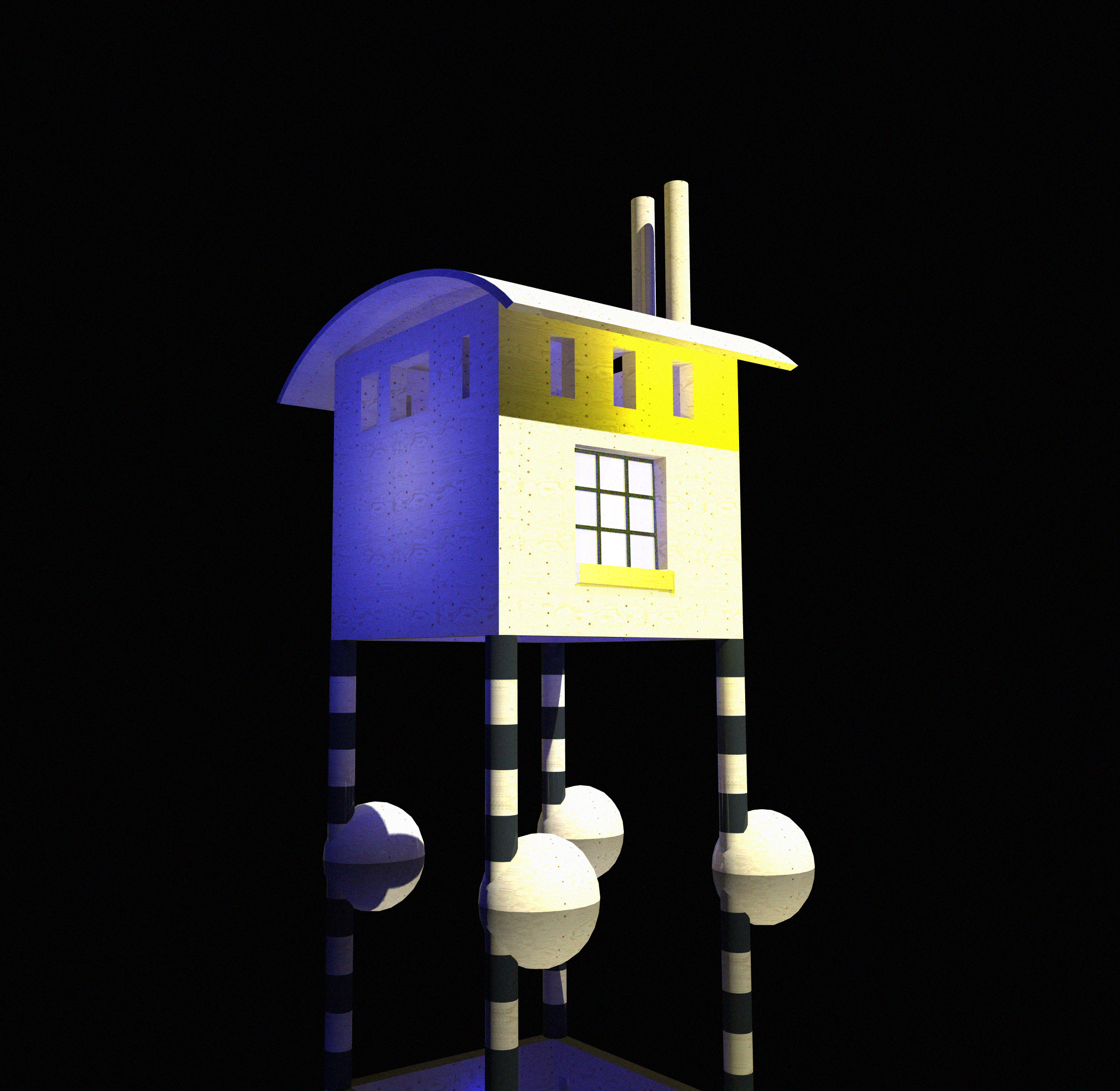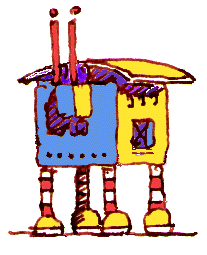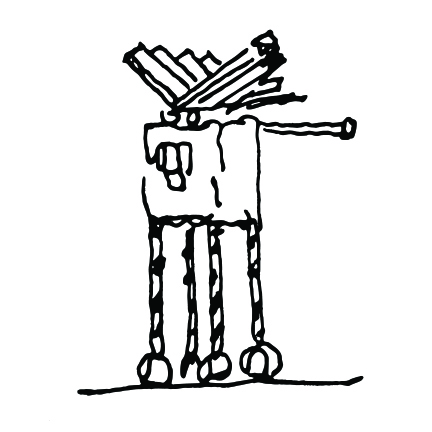About Randy
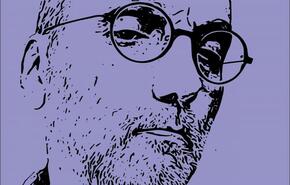
I work between architecture, drawing, and speculative practice, using the house, the pattern, and the interface as instruments for examining how imagination operates under contemporary conditions. Although my training and professional life are rooted in architecture, this work steps outside its conventions, treating architecture not as a service discipline but as a cultural medium shaped by language, memory, and mediation.
Drawing is my primary mode of inquiry. I work with a fountain… more
Oneiric Dwellings: Architecture as Body
These drawings explore architecture as a bodily presence rather than a neutral container. The forms stand, lean, brace, and balance; they appear alert, vulnerable, and responsive to gravity. Rather than borrowing animal imagery, the work treats zoomorphism as a behavioral condition—architecture that behaves as if it has posture, weight, and intention.
Legs, supports, and projections function as organs rather than structural features. Openings read as apertures of attention rather than windows, and mass is organized to suggest stance rather than symmetry. The figures resist completion or stability, occupying a threshold between stillness and movement.
In this work, architecture is not animated through narrative or metaphor, but through bodily logic. These dwellings do not symbolize animals; they register the conditions of being embodied—exposure, imbalance, and the effort required to remain upright. By foregrounding posture and vulnerability, Zoomorphic Dwellings asks how architecture might feel rather than what it might represent.
Word Houses: Architecture as Language
Word House explores architecture constructed from language rather than material. Words operate as structural elements—walls, thresholds, and enclosures—organizing space through syntax and meaning instead of mass or program. In these works, architecture is not represented by language; it is produced through it.
The drawings collapse distinctions between plan, section, and text, treating reading as a spatial act. Words define interiors, establish boundaries, and shape movement, suggesting that language itself can function as an architectural system. Scale and use remain deliberately unstable, allowing the work to operate between diagram, fiction, and structure.
Rather than illustrating ideas, Word House tests how architecture persists when stripped of physical construction. Space here is something assembled through interpretation—entered cognitively before it is imagined physically. The project proposes language as a primary architectural material, capable of organizing experience with the same rigor as form.
Touch and Trace: Drawings for a Mediated Age
Architecture as Interface
Touch and Trace examines the interface as a contemporary architectural condition. The drawings are generated through everyday touchscreen actions—swiping, tapping, and repetition—using the phone as both tool and site. These movements are not expressive gestures but conditioned behaviors, learned through habitual interaction with digital systems.
Through layered filtering and procedural sequencing, individual actions accumulate into fields and patterns. What begins as fleeting touch is slowed and recorded as trace, making visible the structures that organize contemporary attention and movement. The work resists the illusion of digital neutrality by foregrounding how interfaces discipline both perception and authorship.
Here, architecture is understood not as enclosure or form, but as mediation: a set of rules that shape how bodies encounter systems. Touch and Trace situates drawing within this condition, asking how imagination operates when the primary threshold between self and world is an interface.
-
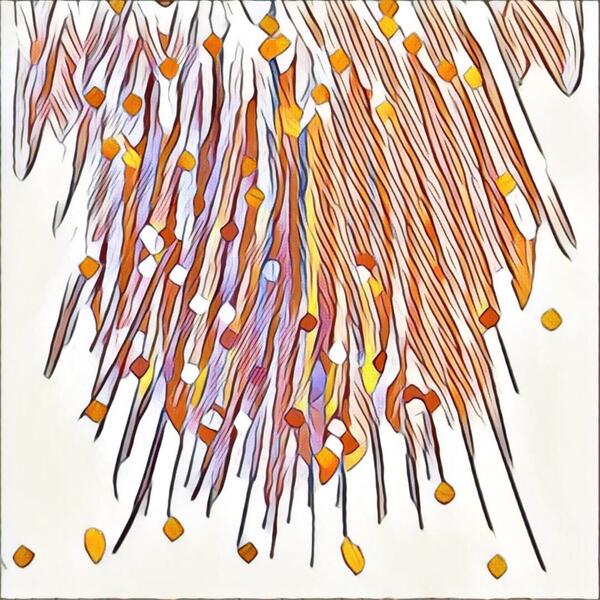 Mazel Tov: a drip from above.
Mazel Tov: a drip from above. -
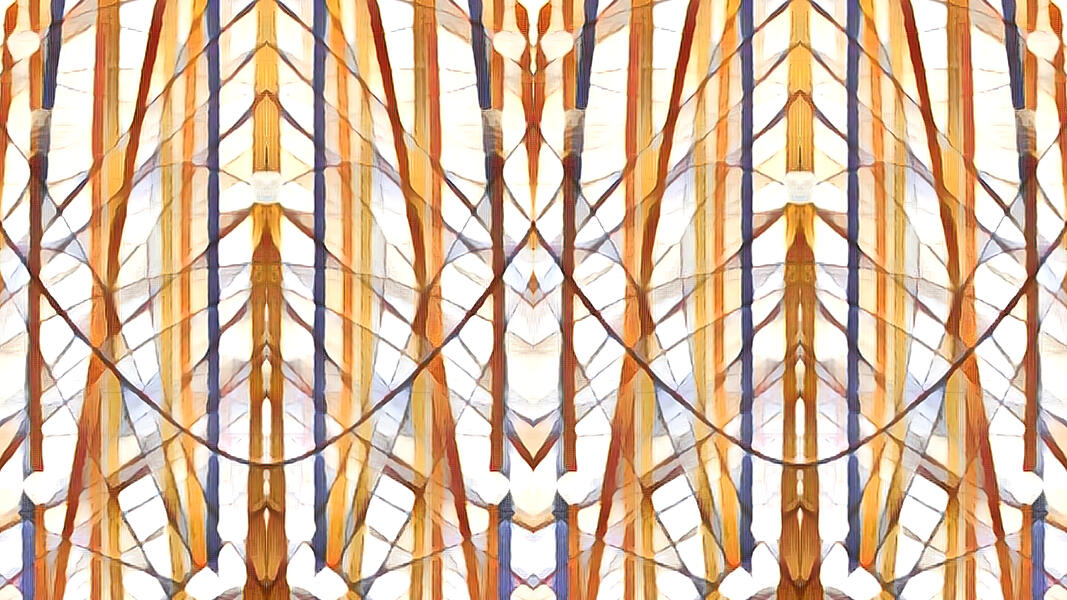 Ornamental Frieze Study
Ornamental Frieze StudyOne of the patterns created for Issue #3: Pattern is Maddening!
-
 Ornamental Frieze Study
Ornamental Frieze Study -
 Ceiling pattern study
Ceiling pattern study -
 Glass Panel Study insitu
Glass Panel Study insitu -
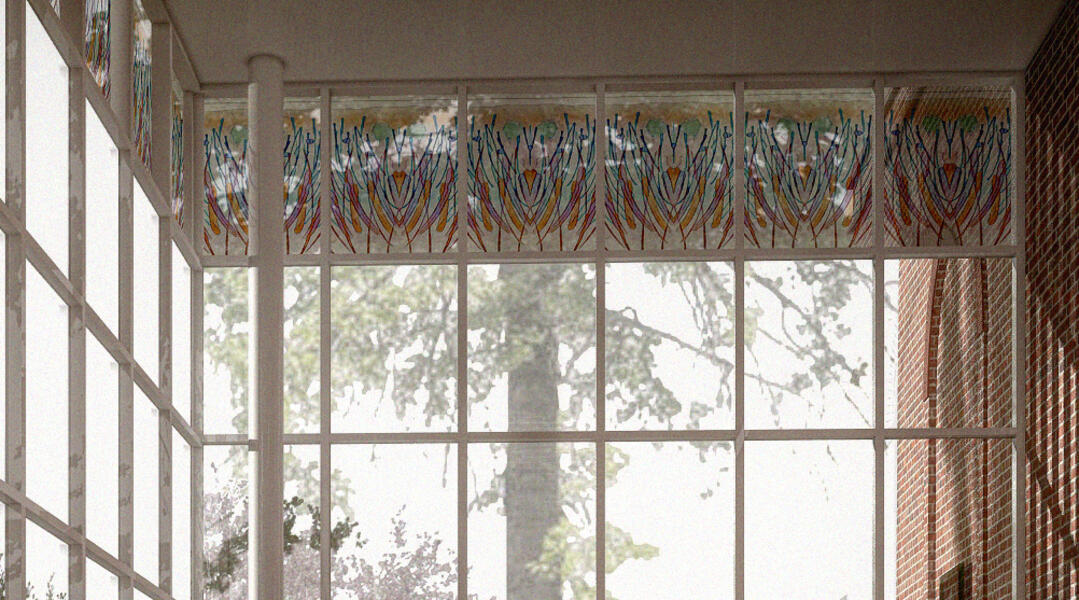 Glass Panel Study insitu
Glass Panel Study insitu -
 Touch and Trace: Architecture as Interface
Touch and Trace: Architecture as Interfacefleurs panel
-
 Ornamental Frieze Study
Ornamental Frieze Study -
 Wall panel study
Wall panel study -
 seed germ
seed germ
Ornament Systems: Architecture as Behavior
Ornament Systems investigates ornament as an outcome of repeated behavior rather than applied decoration. The work emerges from accumulated actions—drawn, filtered, and translated through procedural rules—where repetition produces variation and pattern records use rather than intention.
Rather than referencing historical motifs, these systems register the traces of activity: gestures slowed, multiplied, and organized into fields. The resulting patterns operate as behavioral artifacts, suggesting that ornament can function as evidence of how bodies interact with systems over time.
Ornament is super-additive. It is shaped by rules, habits, and constraints. By treating pattern as the residue of action, Ornament Systems reframes ornament as a form of architectural behavior—something enacted rather than applied, performed rather than designed.
-
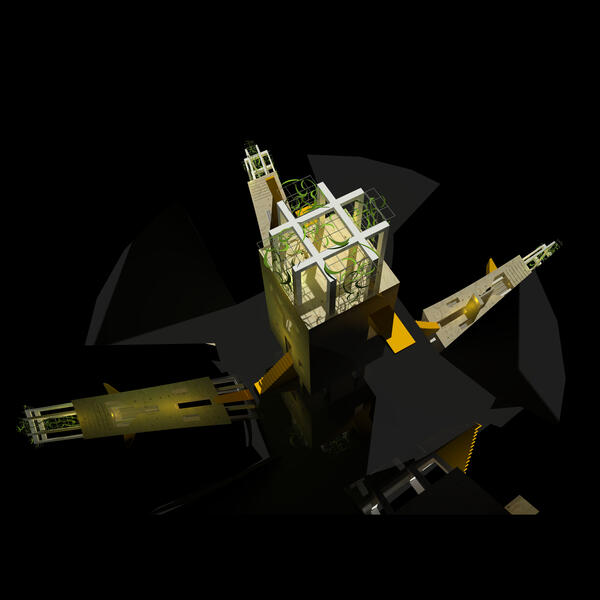 Pursuing a system of architectural ornamentation
Pursuing a system of architectural ornamentation -
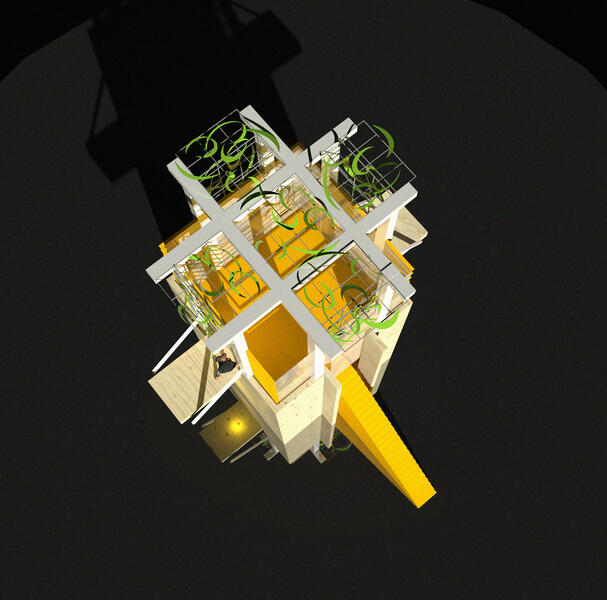 A system of architectural ornamentation of our time.
A system of architectural ornamentation of our time. -
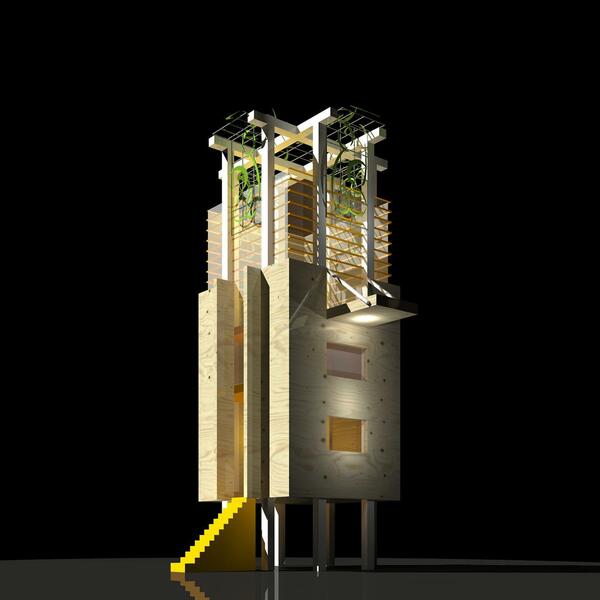 A system of architectural ornamentation of our time.
A system of architectural ornamentation of our time. -
 A system of architectural ornamentation of our time.
A system of architectural ornamentation of our time. -
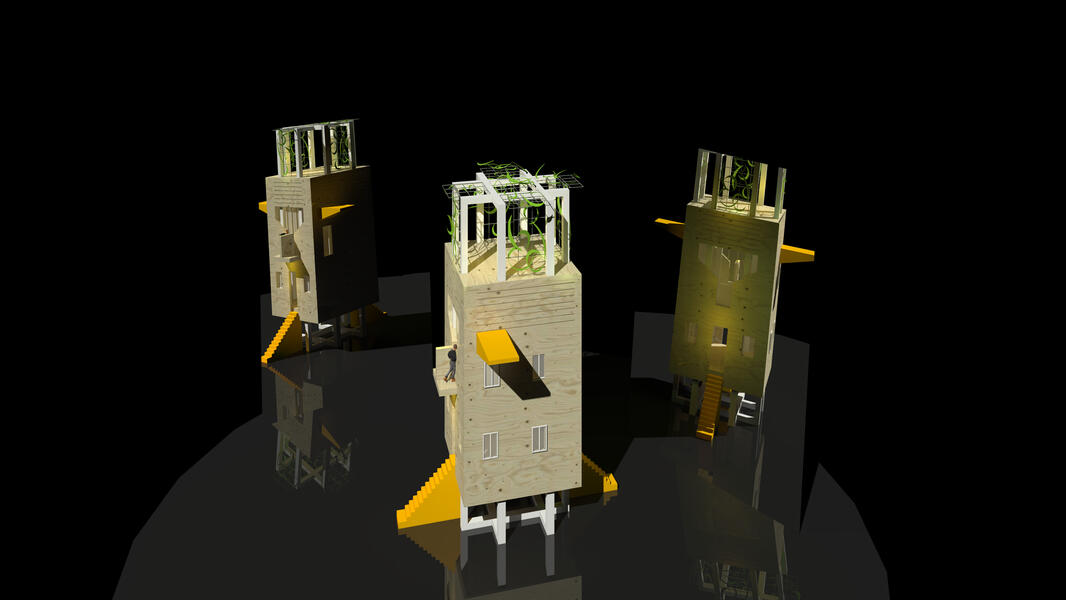 A system of architectural ornamentation of our time.
A system of architectural ornamentation of our time. -
 A system of architectural ornamentation of our time.
A system of architectural ornamentation of our time. -
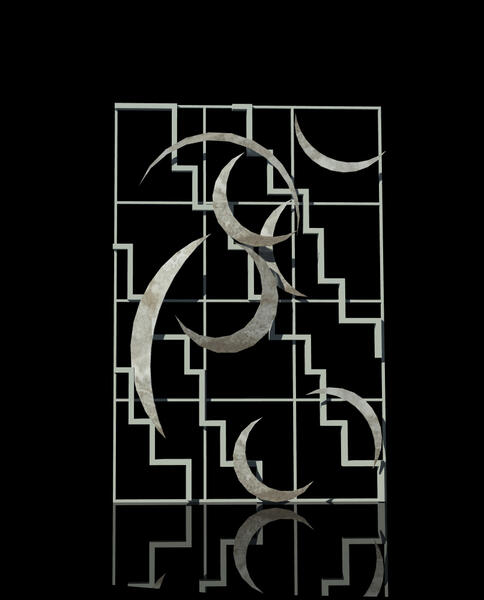 A system of architectural ornamentation of our time.
A system of architectural ornamentation of our time. -
 A system of architectural ornamentation of our time.
A system of architectural ornamentation of our time.Design for an urban 'rug' integrating follies, houses, and towers. The piece was printed and mounted on the sidewalk at the Southeast Community Development Center in Highlandtown.
-
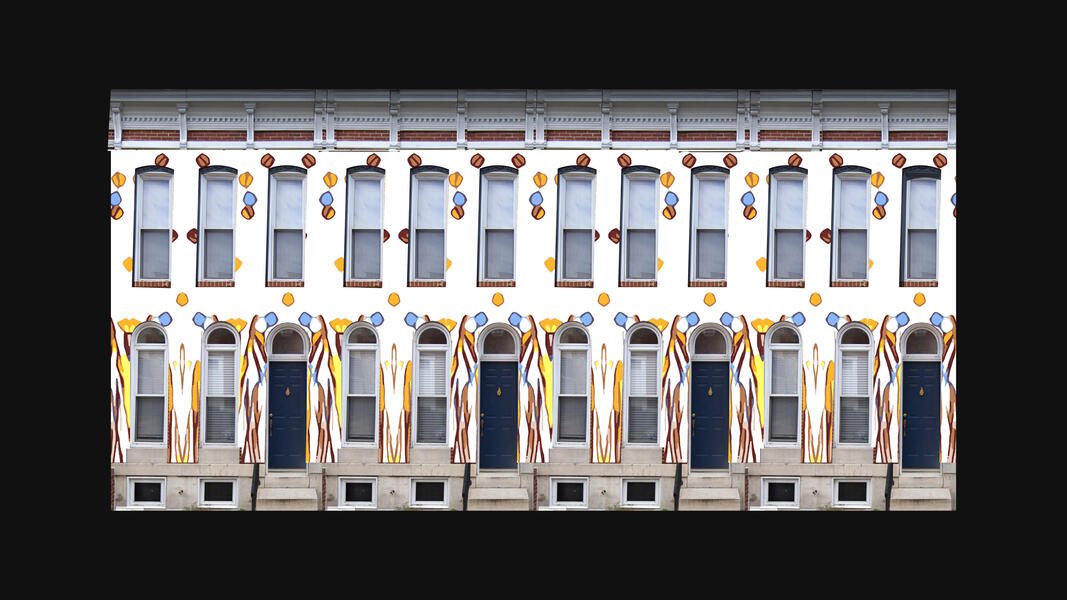 A system of architectural ornamentation of our time.
A system of architectural ornamentation of our time.Study for two-dimensional ornamental pattern added to existing Baltimore rowhouse grouping.
-
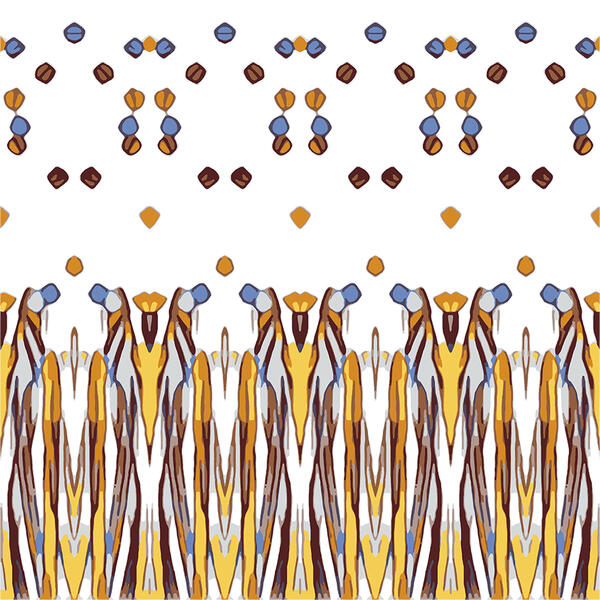 A system of architectural ornamentation of our time.
A system of architectural ornamentation of our time.
Publications: Architecture as Dialogue
These publications treat editing, writing, and graphic composition as architectural acts. Rather than documenting work, they construct spaces of inquiry where images, texts, and arguments encounter one another through exchange. Architecture here is not resolved in objects, but articulated through dialogue—between authors, disciplines, and readers.
Projects such as T3XTURE and DRAW • MODEL • PROMPT: Tectonic Speculations operate as designed environments, shaped by sequencing, juxtaposition, and editorial judgment. Drawing, theory, and emerging tools are placed in conversation, allowing meaning to emerge through friction rather than consensus.
In this work, publishing is not ancillary to practice; it is a site of practice. Dialogue becomes a structural condition—one that resists closure and invites participation. By framing architecture as something argued, tested, and shared, these projects extend the portfolio’s inquiry into the public realm, where imagination remains open, provisional, and collective.
-
 Publications
PublicationsSovich's publications include his work as Co-editor of T3XTURE, an international journal exploring ornament, texture, and pattern in an architecture of our time.
He also published
DRAW•MODEL•PROMPT : Tectonic Speculations
In the world of architectural design, the relationship between drawing, computer modeling, and AI is complex-- is it progression or evolution? The earliest architectural drawings were drawn on the ground at the site. Pencil and watercolor drawings required a talent that favored one designer over another. Computer-aided drafting permitted an ease of creating repetition, simplifying the process. Recent innovations introducing artificial intelligence accelerate the process, effectively making hundreds of iterations possible in a short time span and allowing the designer to act as a curator. Yet the AI tool is still so new, how will it affect the practice? The drawings, computer models, and models generated with text and image prompts in this book explore the interconnected nature of these processes.
-
 The Reading Room Exhibit, Itinerant Architecture, Royal Spanish Academy, Rome, Italy, 2022
The Reading Room Exhibit, Itinerant Architecture, Royal Spanish Academy, Rome, Italy, 2022T3XTURE was selected, in an open call, to be included in the "Reading Room" exhibit--part of the New Urban Challenges Festival created by Itinerant Office. The festival featured emerging architecture practices, innovative publications, and editorial projects through events at the Royal Spanish Academy in Rome.
"...emerging publishing projects, developed in new and experimental forms, open unprecedented windows on the issues of the present and outline the potential "new urban challenges" of the future."
Cecilia Rosa, Il Giornale dell'Architettura.com
-
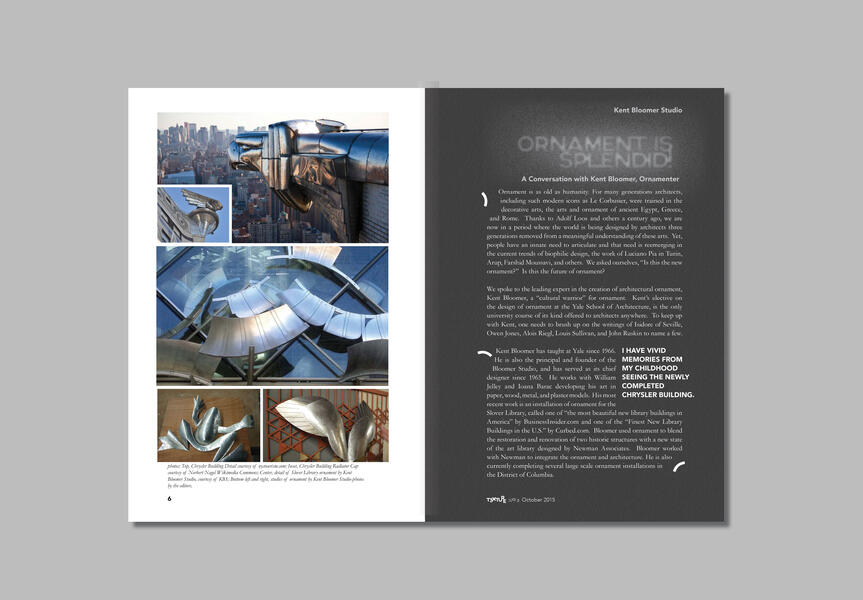 Ornament is Splendid, Visit with Kent Bloomer Studio
Ornament is Splendid, Visit with Kent Bloomer StudioT3XTURE #2 "Ornament is Splendid!" article by Sovich. Photos courtesy of Kent Bloomer Studio.
-
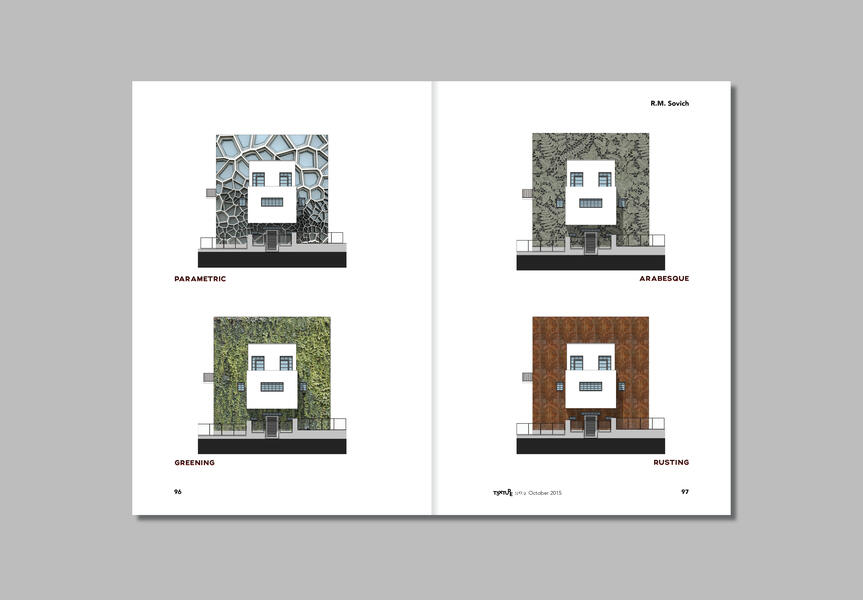 From "One Liners"
From "One Liners"From the piece "One Liners" in "T3XTURE 2, Ornament is Splendid!," this spread is a portion of a critique of trendy late-twenty-first century architectural treatments–by generations of architects ignorant of the role of ornament in architecture.
-
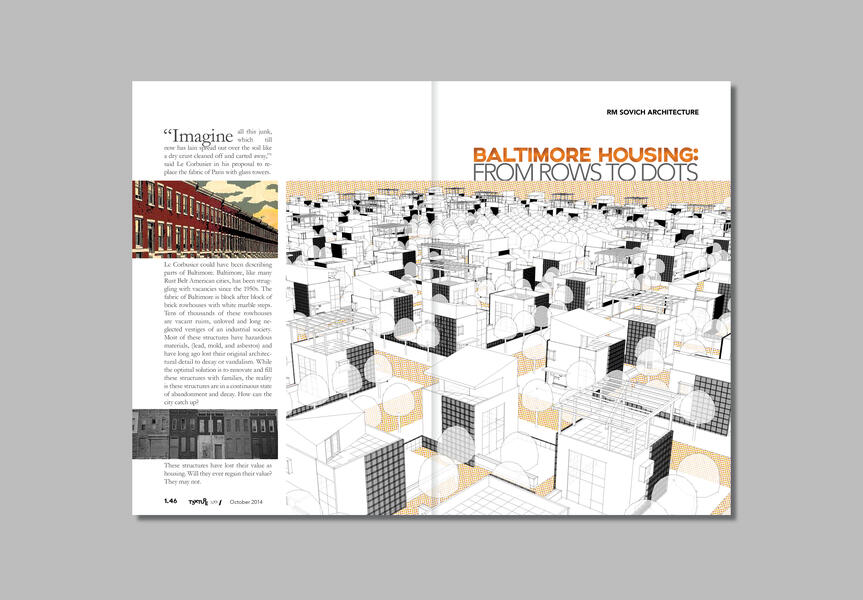 T3XTURE 1 spread
T3XTURE 1 spreadIn this think piece and illustrations by Randy, he imagines a new Baltimore housing model rising from repurposed rubble of tens of thousands of vacant brick row houses.
-
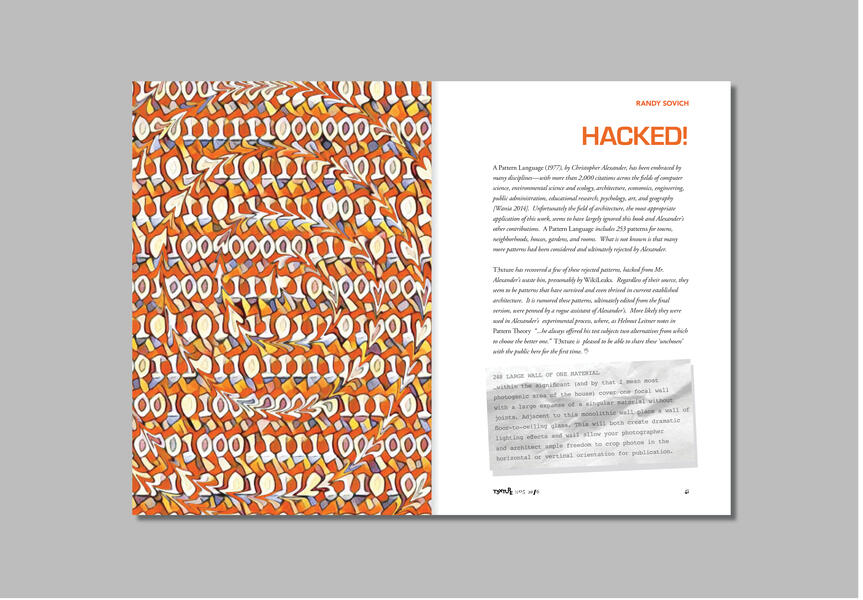 HACKED! a satirical critique by Randy Sovich
HACKED! a satirical critique by Randy Sovich“HACKED!” from T3XTURE #3 Pattern is Maddening”—In this satire, Randy Sovich imagines patterns that were rejected in the editing process of the book, “A Pattern Language” and then lifted from the office trashcan and leaked by a disgruntled employee. Mimicking the language and layout of “A Pattern Language,” Sovich casts a gimlet eye on contemporary architects’ infatuation with formal and stylistic trends which bear no relation to the needs of the client, user, or occupant in these “scrapped” patterns.
-
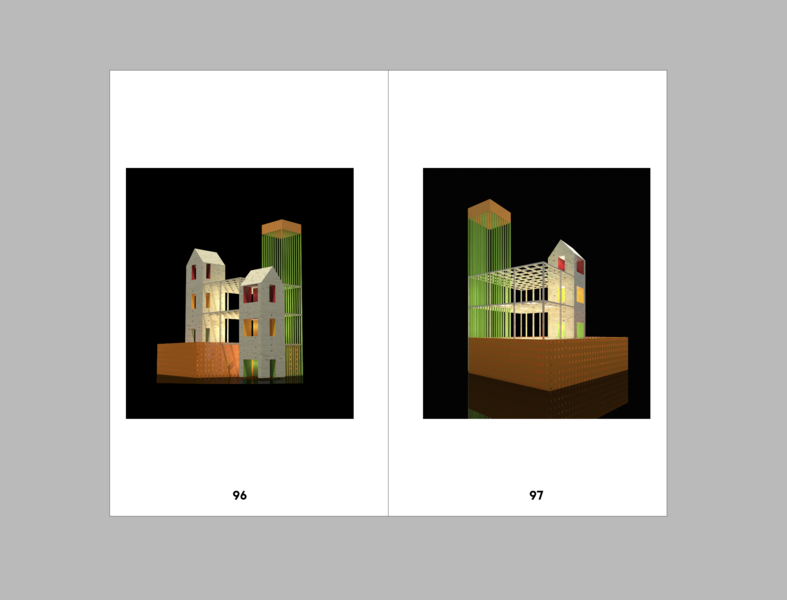 spread from DRAW•MODEL•PROMPT
spread from DRAW•MODEL•PROMPT -
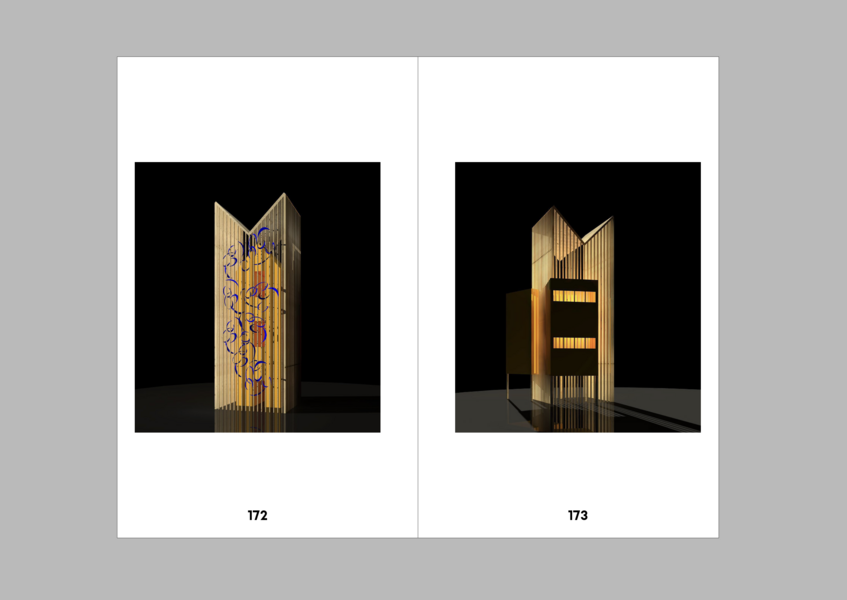 spread from DRAW•MODEL•PROMPT
spread from DRAW•MODEL•PROMPT -
 spread from DRAW•MODEL•PROMPT
spread from DRAW•MODEL•PROMPT


